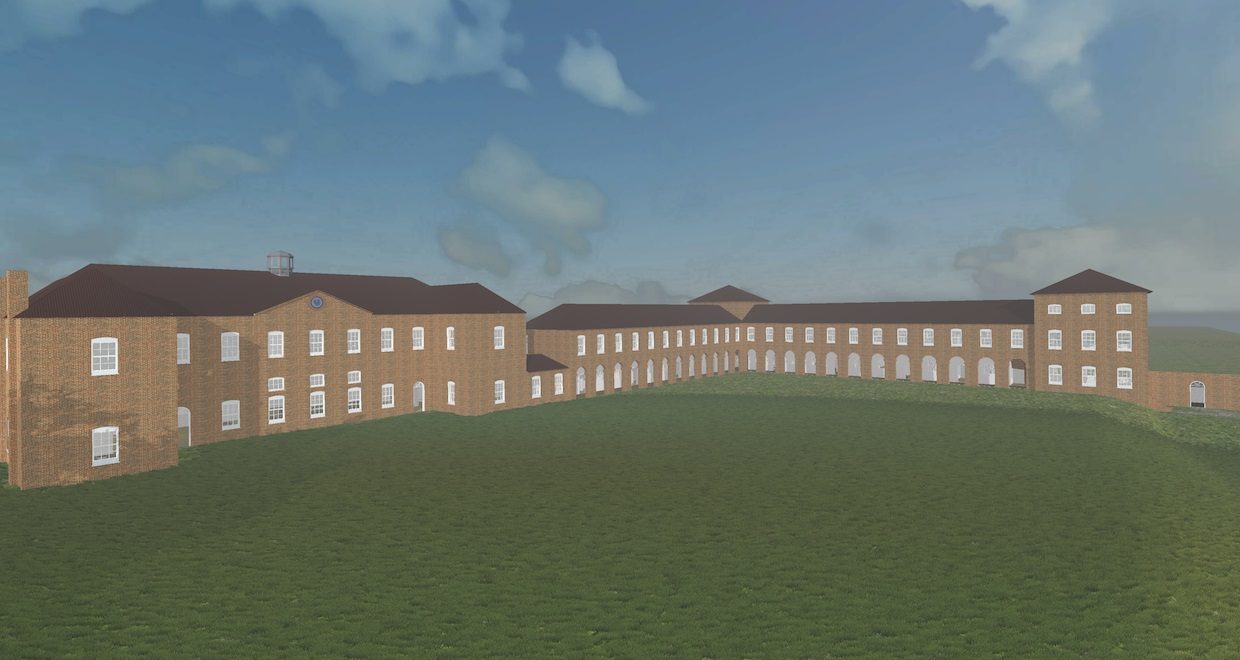Bringing the Past to (Virtual) Life through Digital History Research and Pedagogy
This blog accompanies Susannah Ottaway and Austin Mason’s Historical Journal article Reconsidering Poor Law Institutions by Virtually Reconstructing and Re-Viewing an Eighteenth-Century Workhouse
This article is one product of a fruitful collaboration that combined the co-authors’ respective backgrounds in social welfare history and geospatial digital humanities with our shared interests in the material culture of the poor to build a playable, digital 3D model of an eighteenth-century workhouse. That much is clear from the essay itself, but in this blog post, we want to highlight the many other collaborations and connections that were essential to our research process. Digitally reconstructing the Gressenhall Farm & Workhouse Museum became an extended exercise in collaborative teaching, undergraduate research mentoring, and interdisciplinary digital humanities. The persistent questions and material assistance of our students and community partners were essential elements of this research effort from start to finish.
From the earliest stages, our undergraduate students played a critical role. Florence Wong, a Studio Art major, was instrumental in our first efforts to build a SketchUp model from images, taking high-quality photographs with help from Graham Earley, crafting detailed sketches, and spending dozens of hours ensuring the accurate modeling of windows, doors and other details. Jeremy Fisher and a string of other talented students helped with further modeling and programming, but more importantly peppered us with questions that kept us returning to our archival sources: ‘Would the building have been clean, or do we have to add layers of dust and filth? How much light would the windows let in? How would the inmates move about? Where did they eat? How was food delivered to the dining room?’ Realizing that our project presented educational opportunities beyond our research goals, we decided to offer a course where we could test several broader questions that had begun to preoccupy us: Can historians engage undergraduate students in rigorous readings, extended discussions and intellectually sound writing projects centered on ‘bringing the past to life’ digitally? Can a class work together to build historically accurate, thoughtfully designed digital humanities projects that genuinely contribute to the work of British historians engaged in ‘History from Below’? During two iterations of our course Bringing the English Past to (Virtual) Life, we answered these questions with a resounding affirmative. Along with Gressenhall’s curator Megan Dennis, who co-taught a bloc of the courses with us, we brought the students into our research worlds, and they helped us rethink our archival sources and reshape our digital reconstruction efforts.
As our article argues, the Mitford and Launditch Hundred House of Industry, now the Gressenhall Farm and Workhouse Museum, presents the historian with major opportunities for (re)imagining the past. Our digital modelling necessitated pulling off the mask it currently wears as a museum, stripping away the residue of its time as a twentieth-century Old Age Home, and uncovering the architectural and functional changes that turned it into a Union Workhouse of the New Poor Law period, after 1834. The process of working with our broader team similarly pulled down our past assumptions and built up our confidence in our interpretation of these newly articulated spaces. Each member of our digital humanities research group (the museum curator and staff, two undergraduate course cohorts, and a group of dedicated “Team Workhouse” student research associates) brought their disparate skill sets to the project. Collaboratively re-building the structure in 3D as it existed at its founding has forced us to come to grips with seemingly paradoxical features of its design through a lens that differs in important ways from a traditional, single authored, archive-based research perspective. We think this article shows the exciting possibilities of combining digital history methods with classroom teaching and community partnerships, and we hope it inspires others to pursue similar experiments.
Main Image: Digital 3D model of the 1777 Gressenhall House of Industry produced by the authors and their student collaborators and rendered in Unity 3D.





